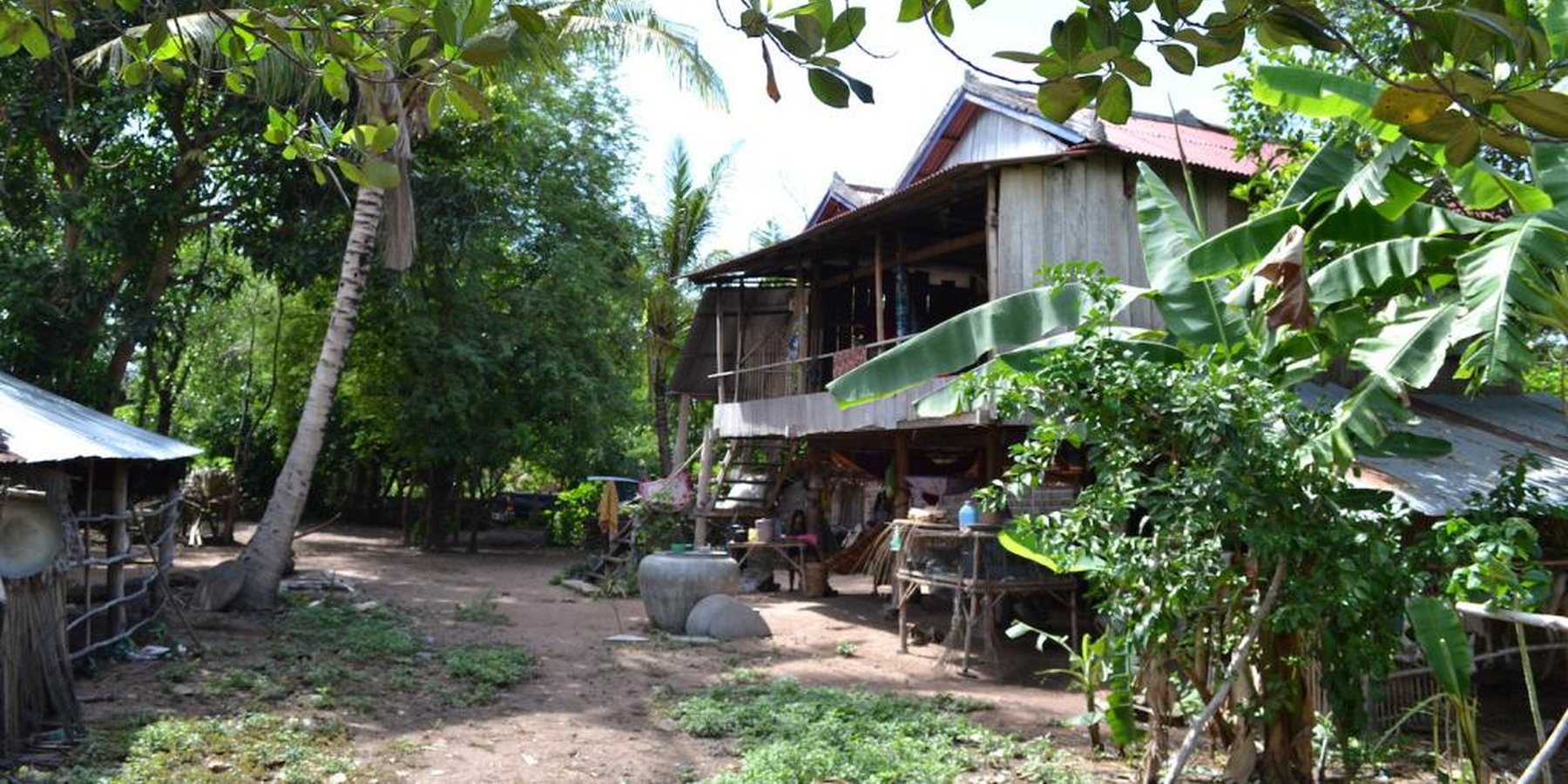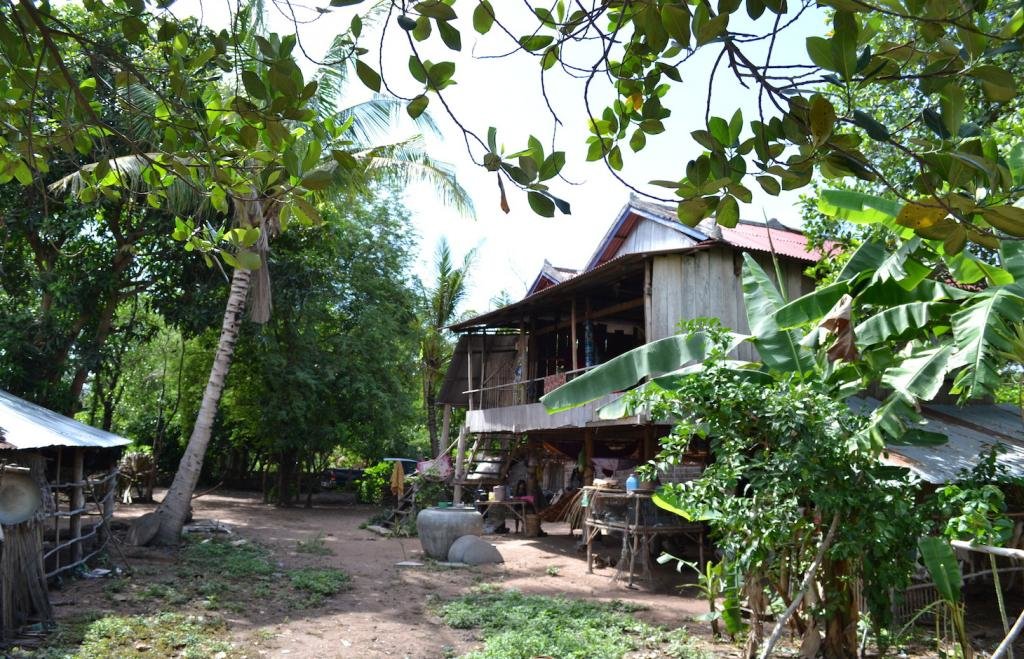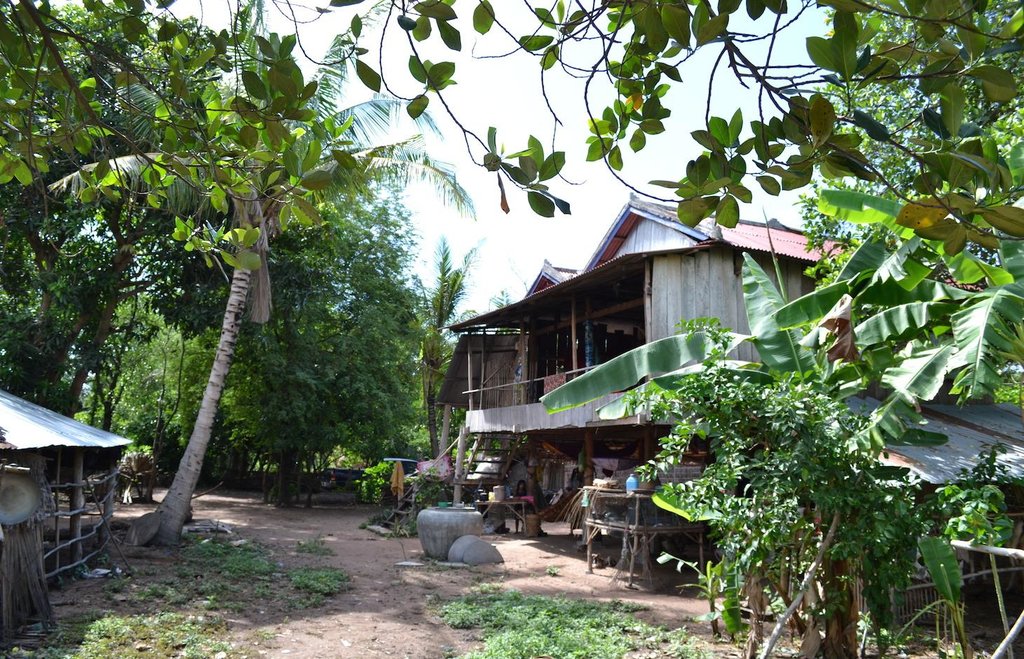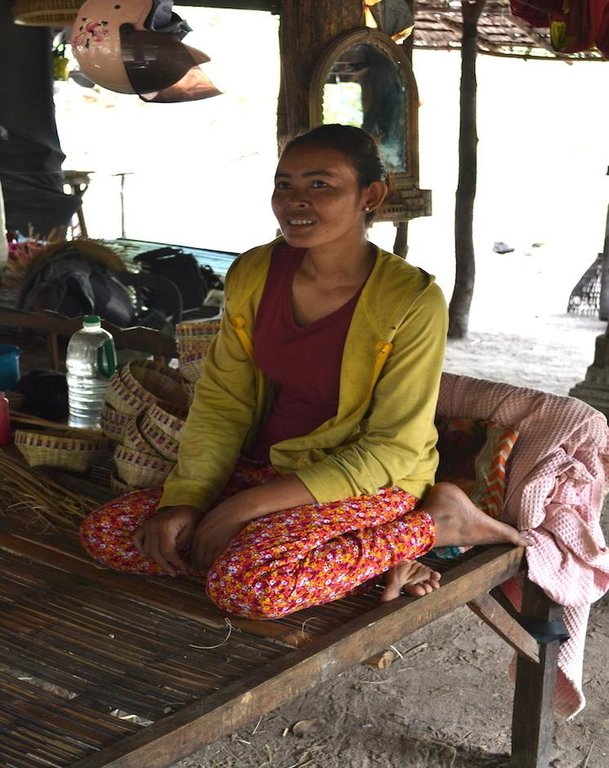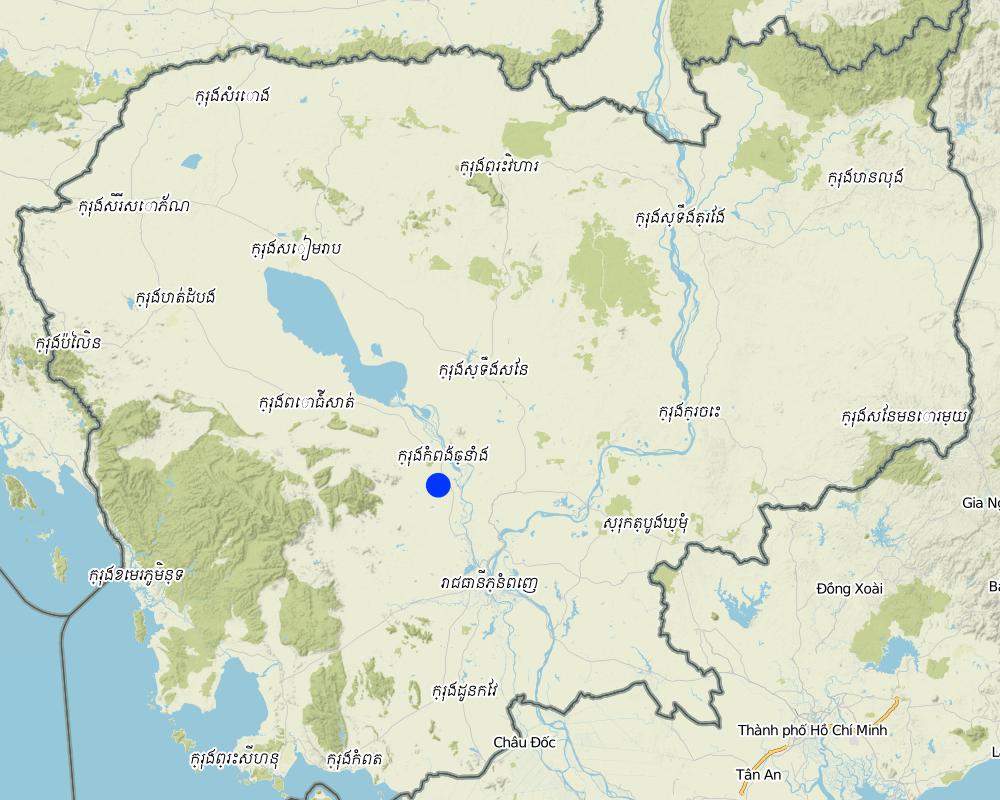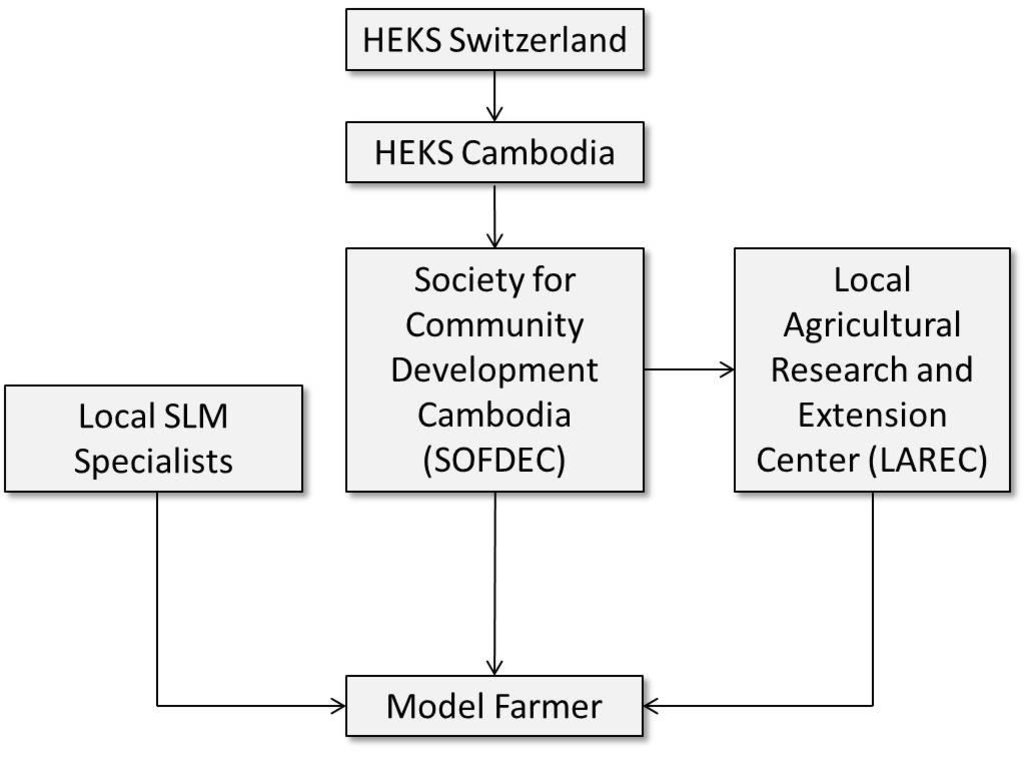Model farmer [Cambodge]
- Création :
- Mise à jour :
- Compilateur : Christoph Kaufmann
- Rédacteur : –
- Examinateur : David Streiff
approaches_2498 - Cambodge
Voir les sections
Développer tout Réduire tout1. Informations générales
1.2 Coordonnées des personnes-ressources et des institutions impliquées dans l'évaluation et la documentation de l'Approche
Spécialiste GDT:
Spécialiste GDT:
Say Mesa
Society for Community Development in Cambodia
Cambodge
Spécialiste GDT:
Bin Sreytouch
Society for Community Development in Cambodia
Cambodge
Spécialiste GDT:
Khun Lean Hak
SOFDEC/LAREC
Nom du ou des institutions qui ont facilité la documentation/ l'évaluation de l'Approche (si pertinent)
Local Agricultural Research and Extension Centre (LAREC) - CambodgeNom du ou des institutions qui ont facilité la documentation/ l'évaluation de l'Approche (si pertinent)
Society for Community Development in Cambodia (SOFDEC) - CambodgeNom du ou des institutions qui ont facilité la documentation/ l'évaluation de l'Approche (si pertinent)
CDE Centre for Development and Environment (CDE Centre for Development and Environment) - Suisse1.3 Conditions relatives à l'utilisation par WOCAT des données documentées
Quand les données ont-elles été compilées (sur le terrain)?
25/06/2014
Le compilateur et la(les) personne(s) ressource(s) acceptent les conditions relatives à l'utilisation par WOCAT des données documentées:
Oui
1.4 Références au(x) questionnaire(s) sur les Technologies de GDT
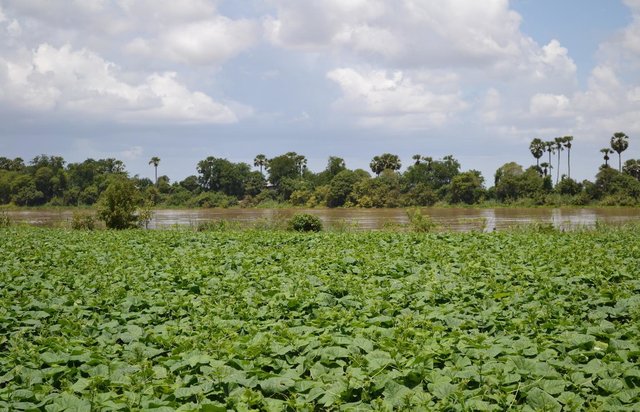
Mulching with water hyacinth (Eichhornia crassipes) after the … [Cambodge]
Water hyacinth (Eichhornia crassipes) is collected during the monsoon floods, attached to poles on the flooded fields, chopped when the water recedes and used as mulch to plant different crops.
- Compilateur : Christoph Kaufmann
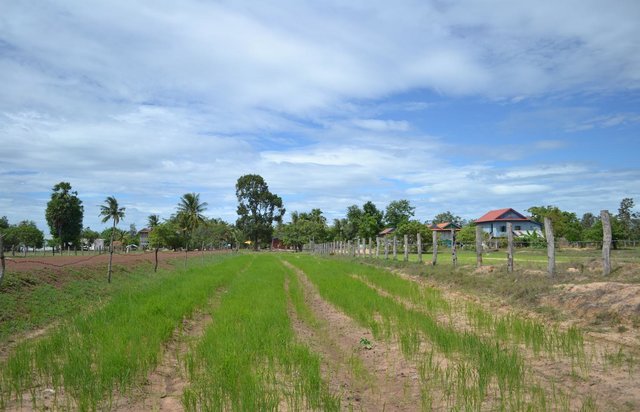
Adapted System of Rice Intensification (SRI) principles in … [Cambodge]
Some points of the System of Rice Intensification (SRI) technology, like the row transplanting of young seedlings and the use of compost are adapted and applied in Kampong Chhnang.
- Compilateur : Christoph Kaufmann
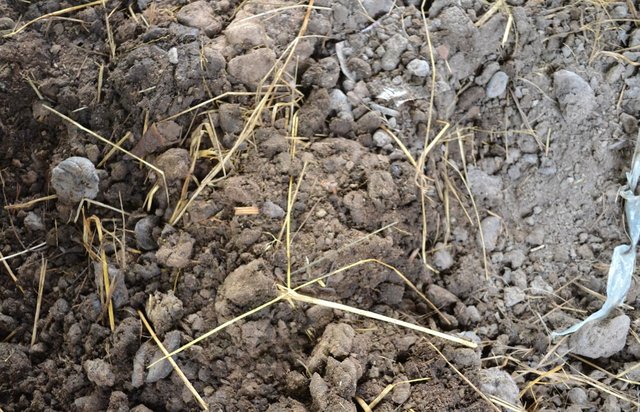
Compost application on rice fields [Cambodge]
Manure, leaves and rice straw are gathered in a compost house and the produced compost is applied twice a year to the rice field.
- Compilateur : Christoph Kaufmann
2. Description de l'Approche de GDT
2.1 Courte description de l'Approche
Model farms were introduced by a NGO in order to spread knowledge about SLM (compost, System of Rice Intensification SRI, and other technologies) in the project area.
2.2 Description détaillée de l'Approche
Description détaillée de l'Approche:
Aims / objectives: Model farms were introduced to Kampong Chhnang Province in order to spread knowledge about SLM Technologies.
Methods: The Approach focuses on various areas of farming, and the model farms are clustered into 4 groups:
1. Compost and System of Rice Intensification focus on rice productivity and soil improvement.
2. SLT (Seasonal Long Training) – growing techniques for different crops, seedling germination, care taking, harvesting, etc.
3. INTEREST – focus on different crops which are mixed, crop rotation (rice-watermelon-corn, e.g.), mulching, cover cropping.
4. Cow raising model farmers – focus on fodder production, vaccination, supplementary feed for the cows, stable construction.
In this case study, the model farmer applies the System of Rice Intensification (SRI) and compost (cluster 1).
Stages of implementation: Becoming a model farmer consists of different steps. First, different land users who dispose of the required inputs (certain amount of land, labour availability, motivation for innovation) are invited to a training organized by a local NGO. After the training, the model farmers are chosen amongst the participating land users. These newly elected model farmers get further training from the NGO. While implementing the selected Technologies (in this case SRI and compost), the model farmers are subsidized and monitored by the NGO.
Role of stakeholders: The role of the stakeholders is both active and passive. While they are invited to the initial training provided by the local NGO (passive), the land users decide - once they're selected as model farmers - by themselves which Technologies they want to apply on their fields (active).
Other important information: The benefits of this Approach are manifold. Firstly, it helps spreading knowledge about sustainable land management in the project area. In the case of Cambodia this is especially important since much of the agricultural knowledge was lost during the Khmer Rouge regime (1975-1979). Furthermore, the soils in the project area are sandy and show a low fertility. Therefore for example compost making can have a positive long term impact on both the natural and the human wellbeing. Secondly, model farmers can have a positive impact on local institutions. It is for example possible for the farmers to give a report to local authorities where they state what the villagers need most. Furthermore, model farmers can become members of NGOs or local authorities, or monitor other farmers in their activities.
The main disadvantage of the Approach is the problem of sustainability. Model farmers are in close cooperation with the local NGO, and if the NGO stops the coaching, it is not ensured that the implemented Technologies will continue. This is illustrated by many abandoned compost houses in the area. Also, the interviewed model famer expressed that since she became a model farmer, there is more work to do. This can be detrimental in an environment where a high migration rate decreases the available labour force. Last but not least the decision about which Technologies are to be applied on the given model farms are mainly taken by the SLM specialists working for the local NGO. If land users were more involved in the decision-making process, this might have a positive long term impact on the farmers motivation to continue applying the chosen Technologies independently (sustainability).
2.3 Photos de l'approche
2.5 Pays/ région/ lieux où l'Approche a été appliquée
Pays:
Cambodge
Région/ Etat/ Province:
Kampong Chhnang
Autres spécifications du lieu :
Rolear Pha-er
Commentaires:
For one model farmer, there are approximately 5 other farmers who copy the technologies
Map
×2.6 Dates de début et de fin de l'Approche
Indiquez l'année de démarrage:
2006
2.7 Type d'Approche
- fondé sur un projet/ programme
2.8 Principaux objectifs de l'Approche
The Approach focused on SLM only
On one hand, land users learn about new technologies (e.g. compost, SRI) which have a positive impact on the yields, the soil fertility and in consequence on the income. On the other hand, model farmers are enabled to show these technologies to other land users (knowledge sharing) so these technologies can be spread in the area. One way to share the knowledge are farmer field days where other land users visit the model farms.
The SLM Approach addressed the following problems: Lack of technical knowledge, low agricultural production, low soil fertility.
2.9 Conditions favorisant ou entravant la mise en œuvre de la(des) Technologie(s) appliquée(s) sous l'Approche
cadre juridique (régime foncier, droits d'utilisation des terres et de l'eau)
- favorise
The current situation of land use rights and ownership is rather complicated since there are different perceptions coexisting. Therefore, no concluding statement about the influence of this situation on the implementation of model farms can be made.
- entrave
The process of formalizing land use rights in Cambodia is slow. No relationship between this Approach and land use rights.
connaissances sur la GDT, accès aux supports techniques
- entrave
Other farmers did not have technical knowledge about the technologies
Treatment through the SLM Approach: Farmers could learn from the model farmer, monitoring can help to maintain the best practices.
3. Participation et rôles des parties prenantes impliquées dans l'Approche
3.1 Parties prenantes impliquées dans l'Approche et rôles
- exploitants locaux des terres / communautés locales
Model farms were installed on existing farms.
The involvement of socially and economically disadvantaged group is indirect. They are not selected as model farmers since they don’t have the necessary inputs. However they can benefit from farmer field days or from talking to a model farmer in order to learn about the new technologies.
- Spécialistes de la GDT/ conseillers agricoles
- ONG
Society for Community Development in Cambodia SOFDEC
- gouvernement local
The Provincial Department of Agriculture PDA was informed about the approach by SOFDEC.
- gouvernement national (planificateurs, décideurs)
At local level, passive
3.2 Participation des exploitants locaux des terres/ communautés locales aux différentes phases de l'Approche
| Participation des exploitants locaux des terres/ communautés locales | Spécifiez qui était impliqué et décrivez les activités | |
|---|---|---|
| initiation/ motivation | passive | The land user attended a workshop organized by SOFDEC/LAREC where he was selected as model farmer. This workshop took place more than 10 years ago. |
| planification | interactive | Farmer plans implementation of compost and SRI |
| mise en œuvre | soutien extérieur | Money from SOFDEC for compost, 15 USD (in-kind contribution by farmer, e.g. labour, some material (wooden pole) and own money to buy cement, iron roof). Training for compost and SRI. SRI field day. |
| suivi/ évaluation | passive | Coaching by SOFDEC |
| Research | aucun | Research is carried out by LAREC and the results, such as new rice varieties, and brought to the model farmer by SOFDEC. |
3.3 Diagramme/ organigramme (si disponible)
Description:
HEKS Switzerland funded the Society for Community Development in Cambodia (SOFDEC), and they support this organisation financially. SOFDEC then funded a research centre on sustainable land management and crops (LAREC) which also maintains an extension service. Together with other local SLM specialists, SOFDEC initiated model farms.
Auteur:
Stefan Graf (Centre for Development and Environment)
3.4 Prises de décision pour la sélection de la Technologie/ des Technologies
Indiquez qui a décidé de la sélection de la Technologie/ des Technologies à mettre en œuvre:
- principalement les spécialistes de la GDT, après consultation des exploitants des terres
Expliquez:
Decisions on the method of implementing the SLM Technology were made by mainly by SLM specialists with consultation of land users
4. Soutien technique, renforcement des capacités et gestion des connaissances
4.1 Renforcement des capacités/ formation
Une formation a-t-elle été dispensée aux exploitants des terres/ autres parties prenantes?
Oui
Spécifiez qui a été formé:
- exploitants des terres
Formats de la formation:
- sur le tas
- cours
Thèmes abordés:
compost making and on the different steps necessary to implement SRI. The training included both theoretical seminars and on-the-job training.
4.2 Service de conseils
Les exploitants des terres ont-ils accès à un service de conseils?
Oui
Spécifiez si le service de conseils est fourni:
- dans les champs des exploitants?
Décrivez/ commentez:
Name of method used for advisory service: Advisory service; Key elements: The Provincial Department of Agriculture delivers some trainings to the farmers in collaboration with SOFDEC , SLM specialists from SOFDEC can get data from the Provincial Department of Agriculture
Advisory service is quite adequate to ensure the continuation of land conservation activities; The involvement of the Provincial Department of Agriculture is supplementary to SOFDEC’s work. Therefore, the land conservation activities could also continue without this advisory service.
4.3 Renforcement des institutions (développement organisationnel)
Des institutions ont elles été mises en place ou renforcées par le biais de l'Approche?
- oui, modérément
Spécifiez à quel(s) niveau(x), ces institutions ont été renforcées ou mises en place:
- local
Précisez le type de soutien:
- renforcement des capacités/ formation
- decision making
Donnez plus de détails:
It is possible that model farmers are enabled to influence local institutions through different ways. One possibility is that model farmers can give a report to the village chief and he can give the data to the commune chief. This is a way how the model farmer might influence the decision making within the village. Also, a model farmer can prepare a proposal to the commune chief where he states what the land users need the most (e.g. seeds).
The model farmers can also become facilitators for training other land users on new SLM technologies. Furthermore, the model farmers might be approached by other NGOs or projects to deliver trainings for them, or they might become members of local institutions such as the community council, or join a NGO. It is also possible for model farmers to take part in competitions organized either by NGOs (such as the Excellent Farmer Award) or the Provincial Department of Agriculture.
4.4 Suivi et évaluation
Le suivi et l'évaluation font ils partie de l'Approche? :
Oui
Commentaires:
Technical aspects were regular monitored by project staff, land users through observations; indicators: Training about how to do the Technology (for SRI and compost only once). Changes in the Technology, challenges for applying the Technology.
Economic / production aspects were regular monitored by project staff through measurements; indicators: Yields. SRI: Tillers per plant on 1 m2.
Management of Approach aspects were regular monitored by project staff through observations; indicators: SOFDEC trains the farmers how they can monitor other farmers.
There were no changes in the Approach as a result of monitoring and evaluation
There were few changes in the Technology as a result of monitoring and evaluation: Some Technologies, such as SRI, have been changed considerably since they have first been implemented. However, these changes were not done because of the monitoring, but because of other factors (lack of labour availability, feasibility, etc.).
4.5 Recherche
La recherche a-t-elle fait partie intégrante de l’Approche?
Oui
Spécifiez les thèmes:
- technologie
Donnez plus de détails et indiquez qui a mené ces recherches:
Research is carried out by the Local Agriculture Research and Extension Centre LAREC. LAREC focus their research on different rice varieties (drought resistant, short breeding), and other plants which could be grown in the area (e.g. mung bean, pumpkin, water melon, stylo grass, etc.). The research is influenced by the demands of land users in the target area.
Research was carried out on station
5. Financement et soutien matériel externe
5.1 Budget annuel de la composante GDT de l'Approche
Si le budget annuel précis n'est pas connu, indiquez une fourchette:
- 10 000-100 000
Commentez (par ex. principales sources de financement/ principaux bailleurs de fonds):
Approach costs were met by the following donors: national non-government (SOFDEC, provides money for compost house and training.): 30.0%; local community / land user(s) (In-kind/money contribution by farmer for compost only): 70.0%
Both model farmers and regular farmers are supported within this project, with total costs of around 20,000$. However, not all of the supported farmers are model farmers. In total, there are 64 model farmers within this project, and we calculated expenditures of about 350 US$ per model farmer.
5.2 Soutiens financiers/ matériels fournis aux exploitants des terres
Les exploitants des terres ont-ils reçu un soutien financier/ matériel pour la mise en œuvre de la Technologie/ des Technologies?
Non
5.3 Subventions pour des intrants spécifiques (incluant la main d'œuvre)
- intrants agricoles
| Spécifiez les intrants subventionnés | Dans quelle mesure | Spécifiez les subventions |
|---|---|---|
| semences | en partie financé | |
- matériaux de construction
| Spécifiez les intrants subventionnés | Dans quelle mesure | Spécifiez les subventions |
|---|---|---|
| Brick and cement | en partie financé | |
Si la main d'œuvre fournie par les exploitants des terres était un intrant substantiel, elle était:
- volontaire
Commentaires:
The land users get also 15 USD for compost making
5.4 Crédits
Des crédits ont-ils été alloués à travers l'Approche pour les activités de GDT?
Non
6. Analyses d'impact et conclusions
6.1 Impacts de l'Approche
Est-ce que l'Approche a aidé les exploitants des terres à mettre en œuvre et entretenir les Technologies de GDT?
- Non
- Oui, un peu
- Oui, modérément
- Oui, beaucoup
Compost has a positive impact on the soil, which results in increased production. However, due to a lack of organic matter to make compost with, the land users still use chemical fertilizer in order to increase the rice yields. As for SRI, the yields can be increased while less seeds are used. Also, the use of compost improves soil fertility. However, this Technology needs more labour input, which results in an adaptation of the Technology by the farmer (Technology is only partly carried out as intended by the SLM specialists, and each farmer does it a bit differently).
Est-ce que l'Approche a autonomisé les groupes socialement et économiquement défavorisés?
- Non
- Oui, un peu
- Oui, modérément
- Oui, beaucoup
In this area, wealth is usually linked to the amount of land a land user can work on. Poorer farmers that live in the neighbourhood of model farmers can copy the newly implemented technologies and benefit from their positive impacts. However, the likelihood that other farmers implement new technologies depends largely on their complexity and the required inputs. Some technologies are therefore easier and more likely to be implemented by socially and economically disadvantaged groups.
Est-ce que l'Approche a amélioré les questions foncières et des droits d'utilisation qui entravent la mise en œuvre des Technologies?
- Non
- Oui, un peu
- Oui, modérément
- Oui, beaucoup
No relationship between this Approach and land use rights. The problem is unlikely to be overcome in the near future. The process of formalizing land use rights in Cambodia is slow.
Did other land users / projects adopt the Approach?
- Non
- Oui, un peu
- Oui, modérément
- Oui, beaucoup
Did the Approach lead to improved livelihoods / human well-being?
- Non
- Oui, un peu
- Oui, modérément
- Oui, beaucoup
Through the use of compost, costs to buy chemical fertilizer were reduced. Also the combination of compost and chemical fertilizer led to higher rice yields, the surplus can be sold. For SRI, less rice seeds are needed (lower costs).
Did the Approach help to alleviate poverty?
- Non
- Oui, un peu
- Oui, modérément
- Oui, beaucoup
The surplus from higher yields can be sold. Also, SRI requires less seeds and if compost can be implemented (depends if the land user owns cattle or not, and some poor land users don’t own any cattle), the expenses for chemical fertilizers can be reduced.
6.2 Principale motivation des exploitants des terres pour mettre en œuvre la GDT
- augmenter la production
New varieties and new Technologies contribute to higher yields.
- conscience environnementale
The farmer collects remaining material (manure) in the fields and backyards, so they are 'cleaner'
- well-being and livelihoods improvement
Higher yields.
6.3 Durabilité des activités de l'Approche
Les exploitants des terres peuvent-ils poursuivre ce qui a été mis en œuvre par le biais de l'Approche (sans soutien extérieur)?
- oui
Si oui, décrivez de quelle manière:
The land user of this case study is not subsidized any more, but she still continues with the technologies. However, the continuation of the activities depends largely on the personal motivation and the available resources (labour force). Some land users do not continue with compost once they are not monitored anymore.
6.4 Points forts/ avantages de l'Approche
| Points forts/ avantages/ possibilités du point de vue de l'exploitant des terres |
|---|
| It is good that model farmer are selected in the village since other farmers can learn from them. (How to sustain/ enhance this strength: Model farmers have to lobby with village leader, commune authority and with the NGO to link them with other organisations and Governmental Agencies. ) |
| Points forts/ avantages/ possibilités du point de vue du compilateur ou d'une autre personne ressource clé |
|---|
| SLM Technology can be tested in-situ. (How to sustain/ enhance this strength: More innovative technologies could be tested in collaboration with farmers. ) |
| Community sense between the farms is strengthened. (How to sustain/ enhance this strength: Community councils could be created. ) |
| Model farmers are like a bridge between the NGO and other farmers. Projects from NGOs can be carried out more effectively. (How to sustain/ enhance this strength: Create a proper mechanism between the model farmers, the village and commune authorities, and the NGO in order to ensure the sustainability of the model farmer approach beyond the NGOs involvement. ) |
| Other farmers can learn SLM technologies without being directly trained by the NGO (How to sustain/ enhance this strength: Continue with the Approach and seek support from village authorities. ) |
6.5 Faiblesses/ inconvénients de l'Approche et moyens de les surmonter
| Faiblesses/ inconvénients/ risques du point de vue de l’exploitant des terres | Comment peuvent-ils être surmontés? |
|---|---|
| The NGO and external people/farmers put workload on model farmers. | Provide compensation to model farmer, show him the benefits of these new Technologies, enable him to participate in local decision making processes. |
| Faiblesses/ inconvénients/ risques du point de vue du compilateur ou d'une autre personne ressource clé | Comment peuvent-ils être surmontés? |
|---|---|
| Some Technologies are abandoned once there is no more support from the NGO. | Include long-term monitoring. Also, this monitoring can be carried out by the model farmers or other farmers in the village. |
| The suggested Technologies require more work and are sometimes counter-intuitive to the model farmers (e.g. SRI). | Provide compensation to model farmer, show him the benefits of these new Technologies, enable him to participate in local decision-making processes. |
| The approach is not really participatory since the specialist decide which technologies should be implemented. | First consult the farmers about their needs. Also, include the farmers in case they know about innovative Technologies. |
7. Références et liens
7.1 Méthodes/ sources d'information
- visites de terrain, enquêtes sur le terrain
- interviews/entretiens avec les exploitants des terres
7.3 Liens vers les informations pertinentes disponibles en ligne
Titre/ description:
SOFDEC
URL:
www.sofdec.org
Liens et modules
Développer tout Réduire toutLiens

Mulching with water hyacinth (Eichhornia crassipes) after the … [Cambodge]
Water hyacinth (Eichhornia crassipes) is collected during the monsoon floods, attached to poles on the flooded fields, chopped when the water recedes and used as mulch to plant different crops.
- Compilateur : Christoph Kaufmann

Adapted System of Rice Intensification (SRI) principles in … [Cambodge]
Some points of the System of Rice Intensification (SRI) technology, like the row transplanting of young seedlings and the use of compost are adapted and applied in Kampong Chhnang.
- Compilateur : Christoph Kaufmann

Compost application on rice fields [Cambodge]
Manure, leaves and rice straw are gathered in a compost house and the produced compost is applied twice a year to the rice field.
- Compilateur : Christoph Kaufmann
Modules
Aucun module trouvé


